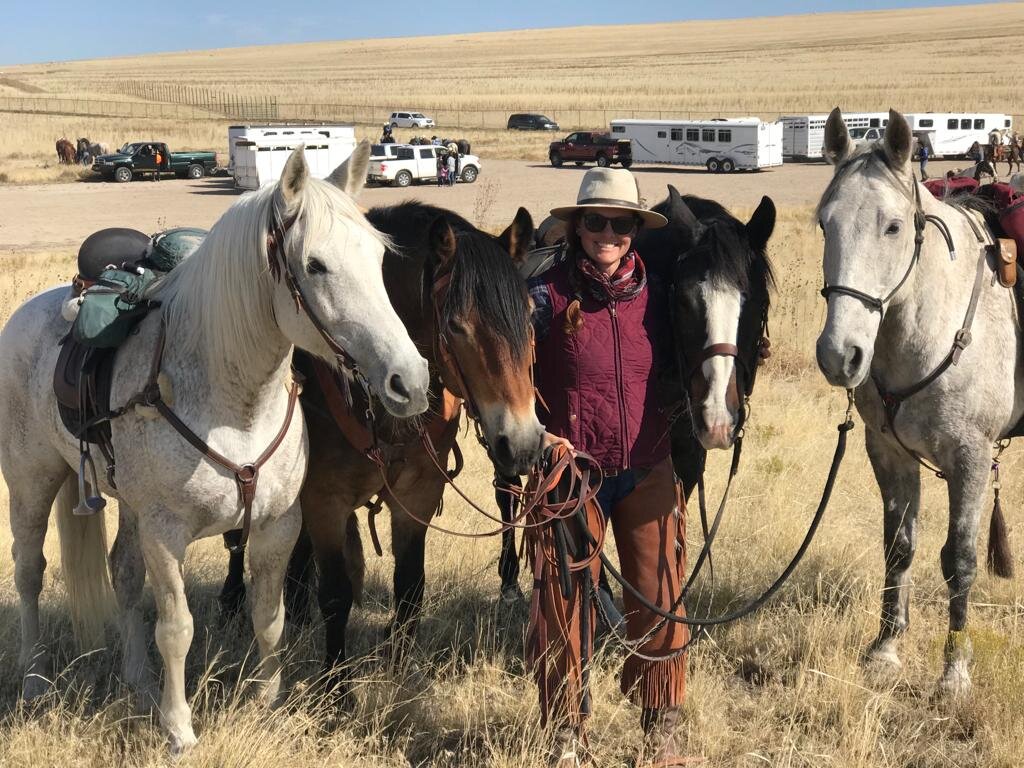“Oh, give me a home where the buffalo roam,
Where the deer and the antelope play,
Where seldom is heard a discouraging word,
And the skies are not cloudy all day.”
The Western United States are famous for wild, wide-open landscapes, but there are few places where the buffalo still roam and the deer and the antelope play. The vast herds of bison which were once at home on the range are now long-disappeared, with only a handful of herds remaining.
One of these herds can be found on Antelope Island, a Utah state park occupying the largest island in the Great Salt Lake. Introduced in 1893, the Island bison have since become one of the largest and oldest publicly-owned bison herds in the country. Visitors to the Island enjoy the trails, on foot and by bike, but most of the land is left to the wildlife, which enjoys abundant grazing, free from human interaction or interference. Home to bison, bighorn sheep, pronghorn antelope, mule deer, porcupines, badgers, and coyotes, the Island is a sanctuary from the ever-expanding metropolis just across the water.
Separated from the mainland by just a short drive across a long causeway, Antelope Island is just a few miles away but a world apart. Tawny prairie grass covers the barren landscape, which rises up steep hillsides to jagged rocks crowning the spine of the island. A handful of bent and twisted trees line the bottoms of steep ravines, but the landscape is otherwise as empty as the surrounding lake. The water is mirror-still, changing colors with the hours of the day, reflecting the vast, cloudless sky and the distant, snow-capped peaks beyond the water. Dead trees dot the salt flats, bleached white in the sun, standing out like frozen strikes of lightning against the endless sky. When the water is low, it is possible to cross on foot, but the wildlife stays on the Island where the grazing is plentiful and the visitors are few.
Once a year though, every October, visitors flock to the island by the thousands for the annual Bison Roundup, when the herds are gathered by rangers and volunteers on horseback and moved into winter holding pens. Some come to ride and some come to watch, but all come to experience a piece of the West, in a place as wild as the bison.
Wild they are – don’t let the wooly, awkward appearance of the bison fool you – although they are seemingly docile, ungainly-looking grass-grazers, they are far more formidable than their herbivorous nature suggests. Weighing up to 2,500lbs and standing up to 6ft tall, they seem cumbersome and clumsy, but are actually very nimble and tremendously fast, faster than horses, and having no natural predators makes them fearless. Their agility, acceleration, and aggression make them a force to be reckoned with – especially when on horseback.
Bison are notoriously ornery, but only become aggressive when provoked. Although rounding them up could easily be considered provocation, doing so with horses and riders is less stressful on the bison than doing so with vehicles, and less likely to incite them. The goal while herding bison is not to provoke them, but to coax them gently, which is why so many riders are essential.
50 mounted park rangers are joined by some 250 volunteers on horseback, many of whom travel from around the country for the event, bringing a festive atmosphere to the weekend as riders gather before the Roundup. Friendships are formed as stories are swapped around campfires, riders who attend year after year telling tales of unruly bison and previous Roundups gone awry. Cowboys clad like characters from an old western contrast with their shiny, brand-new RVs and smart phones, bringing the comforts of home to the remote and historic Fielding Garr Ranch where the Roundup will begin.
“Bison are easy to move,” says Jeremy Shaw, the park manager, “in the direction they want to go. So if you’ve ever worked cattle, forget everything you’ve ever known about moving cattle. Bison don’t work like that.”
First-thing in the morning, before 300 riders mount up, we meet to discuss safety and strategy for the Roundup. The objective is not to force the bison to move – bison can’t be forced to do much of anything – but rather to tempt the bison to move in a given direction by spreading riders out and closing off any other options. Riders are reminded not to get ahead of or too close to the bison – all it takes is one rider in the wrong place at the wrong time to change the direction of the whole herd, with disastrous results. Likewise, pushing them too hard or too fast can make or break the Roundup. Most importantly, bison don’t tend to be deterred by much – they don’t go around or over things, they go through things, so if they are coming in your direction, you get out of their way as fast as you can.
Tingling with excitement, I mounted up with 300 other riders, more than I have ever seen or ridden with at once. Glancing around me, riders seemed excited and eager, some apprehensive, but most of the horses were calm – these are ranch horses, and this was just another day at work for them. We flowed out of the ranch and into the tall prairie grass, where we fanned out into small groups all moving simultaneously north.
We rode for two or three miles before coming across the first small herds of bison. Riding well-behind the front lines of the left flank, I was halfway up the hillside with a sweeping view out towards the water. Riders in the red team on the right flank were guiding a herd from the shoreline inland, and riders to the left, on the green team, were cajoling a smaller group down from the steep upper hillside. The blue team maintained a steady line of riders spread out across the center. Now and then, individual riders would dart out towards the bison and crack a bullwhip, encouraging the herd to keep moving or preventing an individual bison from breaking loose.
The bulls among the herd dwarfed even the largest cows. Obstinate and easily provoked, they are the most dangerous, and riders gave them a wide berth to avoid confrontation. Stubborn bulls who didn’t want to move with the herd were left behind. In the holding pens they only cause trouble, battling for dominance, so they are instead left to their own devices, robust enough to survive on their own through the winter.
The hardest part of the Roundup, for both the bison and the horses, is Heartbreak Hill, the point where the bison are driven over the spine of the Island. At this point, different herds which have been herded by different groups all come together, like streams into a river, and rest while the riders sit by and eat the sandwiches we have stashed in our saddlebags. After lunch, the bison – nearly 800 strong now – are eased down the far side of the hill and into the final stretch of the Roundup. Here, there is the widest margin for error, as the terrain narrows between the lake on the left and the bluffs on the right. The herd are moved into a bottleneck towards the gate at the far end, kicking up a cloud of dust beneath their hooves as they trample across the rocky ground. I almost lose sight of them in the dust, just hooves and tails here and there. The bison are tired at this point – as are the riders – so they seem to moving forward complacently, but that can change in an instant.
Riders suddenly emerged from the dust ahead, shouting, “Go! Go! Go!” as they came galloping towards me. Horns appeared behind them as bison came charging out of the rolling, billowing dust, and like the other riders, my horse and I turned tail and ran as fast as we could.
Like a river parting around rocks, bison darted on either side of me, effortlessly passing horses, darting and dodging left and right between the riders. For a few minutes it was complete chaos of thundering hooves, and then the dust settled. A few dozen bison had broken through the rider ranks, and by the time I had my bearings again they were halfway up the hillside behind us, and some had run out into the salt flats, already tiny specks in the distance. The rest of the bison were still clustered in the corner by the gate, visibly agitated but holding steady. We let them calm down for a few minutes before gently nudging them towards the gate again. Once the first few crossed the threshold, the rest followed easily.
After the horses had been untacked, fed, watered, and settled in for the evening we headed over to the Fielding Garr Ranch for a chili dinner hosted by the park management in the historic barn. We recounted and relived the highlights of the day as the last pink rays of sunshine hit the snowy peaks across the way, above their shimmering reflection in the lake.
“This place is so peaceful and yet so wild. When you visit it, it changes your heart,” says Jeremy Shaw, the park manager.
Captivated by the barren beauty of Antelope Island’s desolate landscape, and fascinated by the unique and epic event I was fortunate enough to participate in, I’m already hoping to attend again next year. Now I know what to expect when herding bison on horseback, but more than that, I can look forward to seeing familiar faces and the camaraderie of the campground, taking in sweeping views from atop the Island’s spine, and watching an event like none other unfold before me while doing what I do best – adventuring on horseback.
Check out our video of this incredible event:






